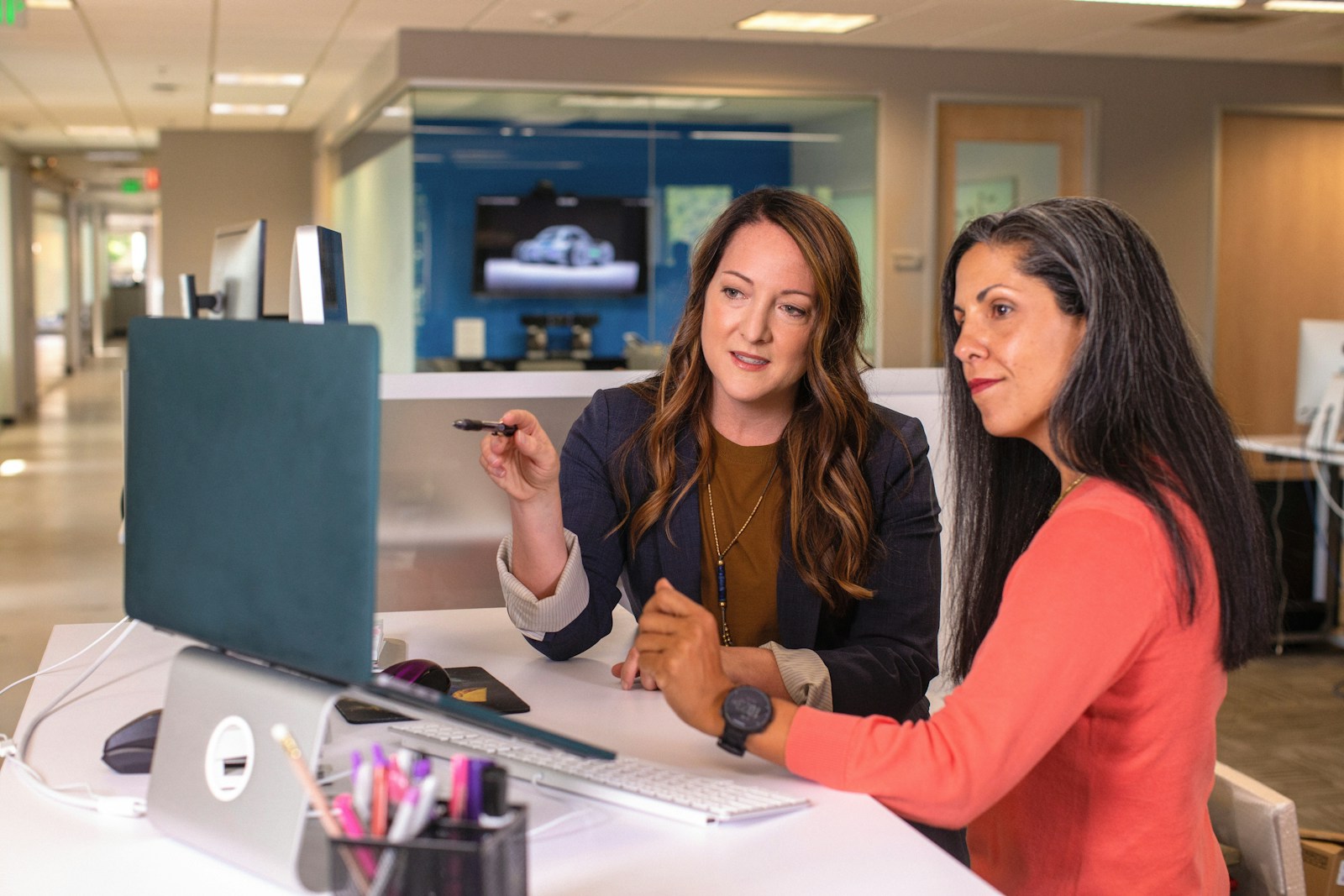Taking a leap into the unknown can be daunting, especially when it comes to making decisions that impact your career and life. However, with the right framework, you can make informed choices that align with your values, aspirations, and lifestyle. The LEAP model—Location, Environment, Aspirations, Position—provides a structured yet flexible approach to navigating these decisions, integrating personal lifestyle factors with professional aspirations. This guide will explore how to apply the LEAP model to your career and life planning, ensuring that when you leap, the net will indeed appear.
Why Choose the LEAP Model?
The LEAP model stands apart by integrating personal lifestyle factors with professional aspirations, offering a holistic approach to career planning. It not only guides you in finding the right job but also ensures it fits into the bigger picture of your life. Whether you are just starting out or contemplating a career change, the LEAP model helps you align your career path with what truly matters to you.
1. Choose Your Backdrop: How Location Shapes Your Life and Career
Location is more than just a place on the map—it’s the backdrop of your life, influencing everything from your daily routines to long-term happiness. Choosing the right location can enhance your quality of life and open new opportunities, both personally and professionally.
a. Environmental Factors
- Light Availability: The amount of natural light you receive can significantly affect your mood and energy levels. For example, consider the difference between living in a sunny, vibrant city like Sydney versus a more overcast place like London. If you thrive in bright, sunlit environments, choosing a location with plenty of natural light can boost your productivity and well-being.
- Climate and Temperature: Whether you prefer the warmth of a tropical climate or the crispness of a cooler environment, temperature plays a crucial role in your lifestyle. Warmer climates offer year-round outdoor activities, while cooler regions might appeal to those who enjoy seasonal changes and winter sports.
b. Accessibility and Services
- Education and Healthcare: Proximity to quality educational institutions and healthcare facilities is a critical consideration, especially if you have a family or plan to start one. Access to good schools and universities can influence your children’s future, while reliable healthcare ensures peace of mind.
- Transportation and Infrastructure: A well-connected location with efficient public transport and good road networks can make commuting easier and reduce daily stress. Consider the impact of traffic, commuting time, and accessibility to essential services when choosing your ideal location.
c. Cost of Living and Economic Opportunities
- Housing and Expenses: The cost of living varies greatly depending on location. Cities like Melbourne or New York has a higher cost of living compared to smaller towns or regional areas. Assess your financial situation and consider how housing costs, utilities, and general expenses align with your income and lifestyle expectations.
- Job Market and Opportunities: Some locations are hubs for specific industries. For example, Silicon Valley is synonymous with tech, while New York is known for finance. Choose a location that offers strong job prospects in your field or consider remote work options if you prefer to live outside traditional industry centres.
Example: Consider Jane, an IT professional who values outdoor activities and a mild climate. She realised that relocating to Brisbane, known for its warm weather and vibrant tech scene, would allow her to balance her career with her love for nature.
2. Find Your Fit: Selecting the Right Work Environment
Once you’ve chosen your ideal location, the next step is to find a company that aligns with your values, culture, and professional goals. The environment in which you work has a profound impact on your job satisfaction and overall happiness.
a. Organisational Values and Culture
- Vision and Mission: Do the company’s goals resonate with your own? Working for an organisation with a clear vision and mission can provide a sense of purpose and direction. For example, if you’re passionate about sustainability, a company dedicated to environmental conservation may be a perfect fit.
- Cultural Dynamics: Company culture shapes your day-to-day experience. Consider whether you thrive in a collaborative, team-oriented environment or prefer more autonomy and independence. Researching employee reviews and talking to current or former employees can provide insights into a company’s culture.
b. Reputation and Brand Image
- Industry Standing: A company’s reputation can affect your professional image. Working for a well-regarded organisation can open doors and provide networking opportunities. Conversely, being associated with a company facing ethical or financial issues can impact your career progression.
- Community and Social Impact: Consider how the company interacts with the community and its social responsibilities. Companies that engage in corporate social responsibility (CSR) initiatives or support charitable causes often have a positive work environment and employee morale.
c. Growth and Stability
- Financial Health: A financially stable company is more likely to provide job security and opportunities for growth. Research the company’s performance, revenue trends, and industry position to assess its stability and prospects.
- Career Development: Look for organisations that invest in employee development through training, mentorship programs, and opportunities for advancement. A company committed to your growth will support your professional journey and help you achieve your career goals.
Example: After using the LEAP model, Alex found his dream role as a remote project manager, allowing him to pursue his passion for travel while advancing his career.
3. Set Your Course: Aligning Your Career with Your Life Goals
Your aspirations are the compass guiding your career journey. Understanding your long-term goals, both personal and professional, is crucial to making informed decisions that lead to fulfilment and success.
a. Personal and Professional Goals
- Long-Term Vision: What do you want to achieve in the next five, ten, or twenty years? Whether it’s becoming a leader in your field, starting your own business, or achieving a work-life balance that allows for family time and personal pursuits, having a clear vision will help you set the right course.
- Skills and Competencies: Identify the skills you need to achieve your goals. Consider both hard skills (technical expertise) and soft skills (leadership, communication). Continuous learning and professional development are key to staying competitive and reaching your aspirations.
b. Work-Life Balance
- Flexibility and Autonomy: Does your ideal career path offer the flexibility you need to balance personal and professional commitments? Remote work, flexible hours, and autonomy in decision-making are increasingly important factors in career satisfaction.
- Health and Well-Being: A demanding job can take a toll on your physical and mental health. Prioritise roles and environments that support a healthy lifestyle, whether through wellness programs, a supportive work culture, or manageable workloads.
c. Passion and Purpose
- Meaningful Work: Does your work align with your passions and values? Jobs that allow you to contribute to causes you care about or use your talents in meaningful ways can lead to greater satisfaction and fulfilment.
- Intrinsic Motivation: Consider what drives you beyond financial rewards. Whether it’s the joy of solving complex problems, helping others, or creating something new, aligning your work with your intrinsic motivations can sustain you through challenges and setbacks.
Example: David, a social worker, realised that his true passion lay in helping underprivileged communities. He used the LEAP model to transition from a corporate role to a non-profit organisation that aligned with his personal values and long-term goals.
4. Find Your Role: Matching Skills to the Right Position
The final element of the LEAP model is choosing the right position within the company. This involves matching your skills and interests with the role’s requirements and ensuring that the job aligns with your long-term career aspirations.
a. Role and Responsibilities
- Skill Alignment: Does the role utilise your strengths and expertise? A job that matches your skill set not only boosts your confidence but also increases your chances of success and satisfaction.
- Scope and Impact: Consider the impact of your role within the organisation. Roles that offer the opportunity to lead projects, influence decisions, or contribute to significant outcomes can be more rewarding and engaging.
b. Compensation and Rewards
- Fair Compensation: Ensure that the salary and benefits package are competitive and reflect your skills, experience, and industry standards. Fair compensation is crucial for job satisfaction and financial stability.
- Recognition and Growth: Look for roles that offer opportunities for recognition, whether through promotions, awards, or professional development. Acknowledgment of your contributions can significantly enhance job satisfaction and motivation.
c. Job Satisfaction and Enjoyment
- Day-to-Day Experience: Will you enjoy the daily tasks and responsibilities of the role? Consider the work environment, team dynamics, and the nature of the work. A role that aligns with your interests and preferred working style is more likely to be fulfilling.
- Career Trajectory: Does the position offer a clear path for advancement? Understanding the potential for growth within the role can help you assess whether it aligns with your long-term career goals.
Example: Sarah, a marketing professional, transitioned from a corporate job to a start-up that offered her a leadership role. She felt more engaged and motivated as she could use her skills to shape the company’s direction and growth.
Applying the LEAP Model: A Step-by-Step Guide
- Self-Assessment: Start by reflecting on your personal and professional values, strengths, and goals. What are your priorities in terms of location, company culture, and role responsibilities?
- Research: Explore potential locations, companies, and roles that align with your criteria. Use online resources, networking, and informational interviews to gather information.
- Evaluation: Compare your options using the LEAP model. Assess each element—Location, Environment, Aspirations, Position—to ensure they align with your overall vision and goals.
- Decision-Making: Make an informed decision based on your evaluation. Remember, there may be trade-offs, but a balanced approach that considers all four elements will lead to a more fulfilling career and life.
- Implementation: Once you’ve made your choice, set clear goals and action plans to achieve your objectives. Stay open to adjustments as circumstances change and remember that career planning is an ongoing process.
Common Questions About the LEAP Model
- What if my aspirations change over time?
- Your aspirations are likely to evolve. The LEAP model is designed to be flexible, allowing you to revisit and adjust your plans as your goals and circumstances change.
- How do I balance financial needs with personal goals?
- Use the LEAP model to evaluate trade-offs and consider options like remote work or part-time roles that align with your financial and personal needs.
Conclusion: Embrace the Leap
The LEAP model provides a comprehensive framework for career and life planning, helping you make informed choices that align with your values and aspirations. By considering Location, Environment, Aspirations, and Position, you can take the leap with confidence, knowing that the net will appear. Whether you’re at the beginning of your career journey or looking to make a change, the LEAP model can guide you toward a fulfilling and successful future.
Remember, the path may not always be clear, but with the right mindset and a strategic approach, you can create a career and life that truly resonate with who you are and what you aspire to be.
Call to Action: Download our free LEAP Self-Assessment Worksheet to evaluate your current career alignment and start planning your next leap today!






